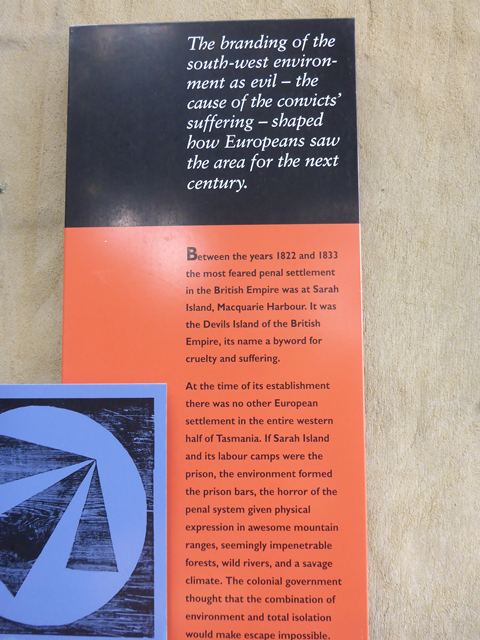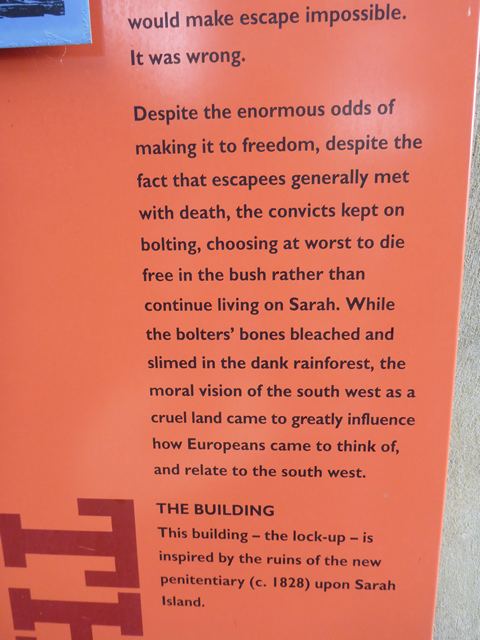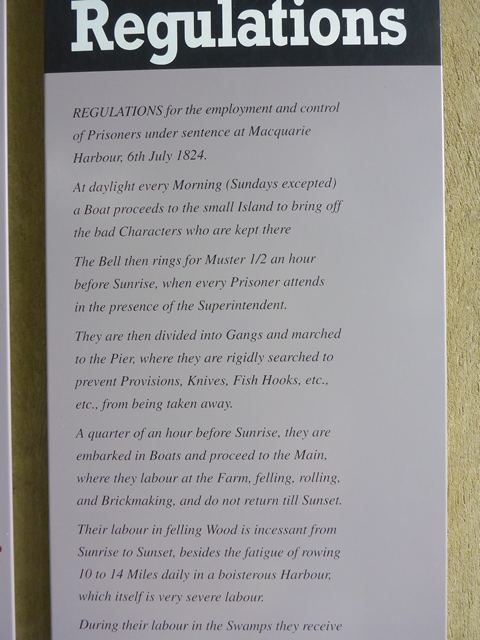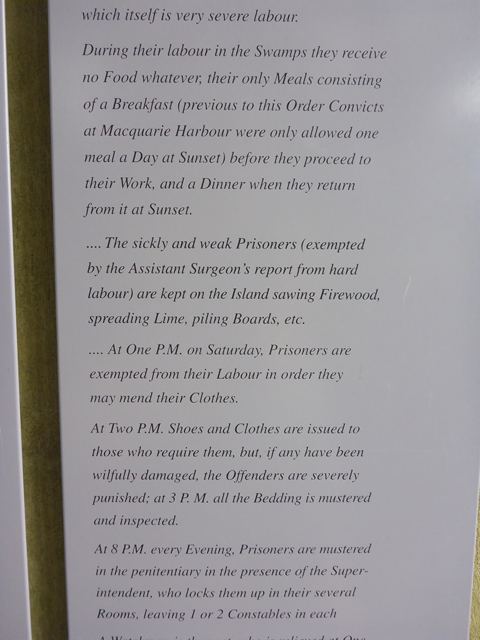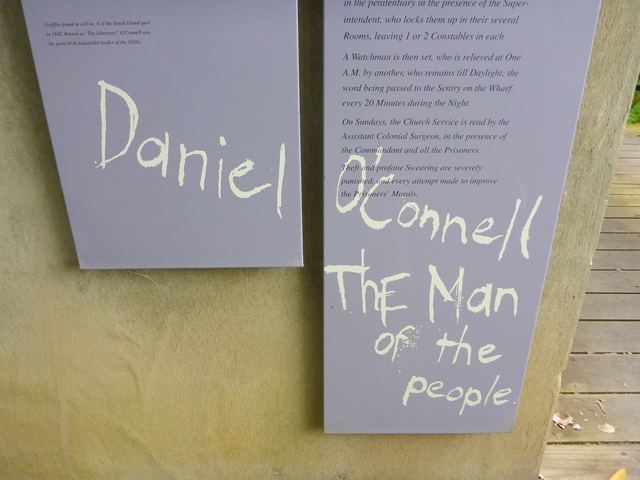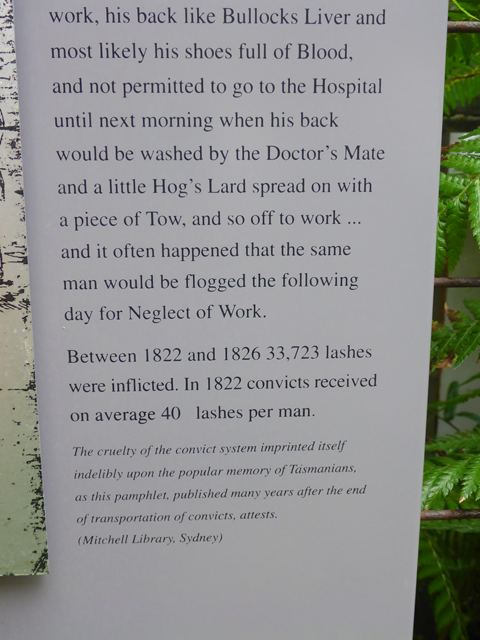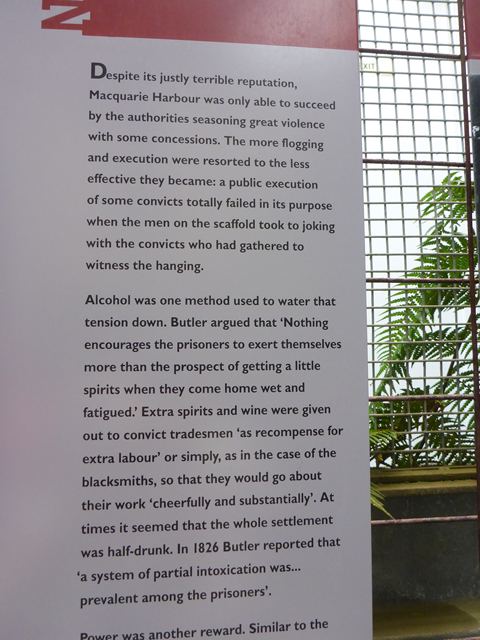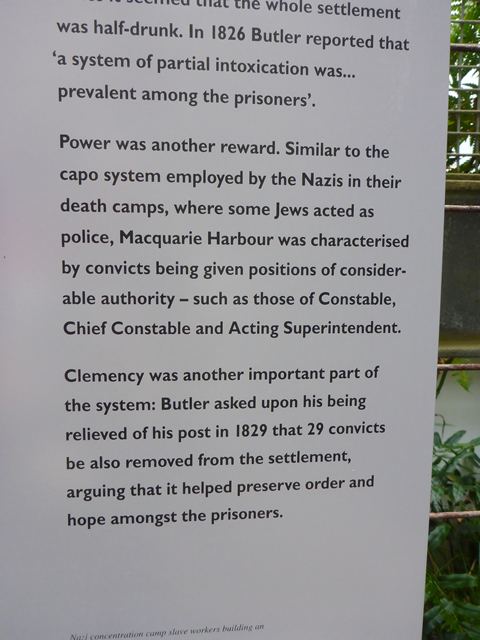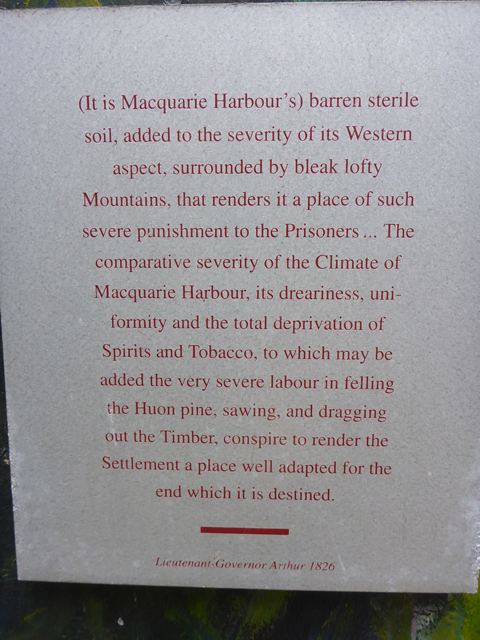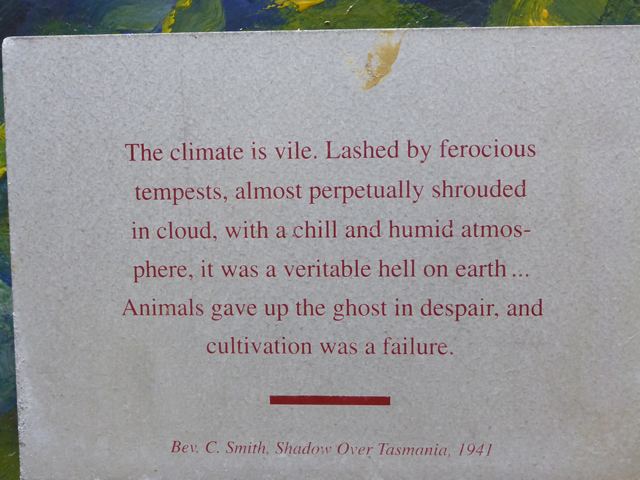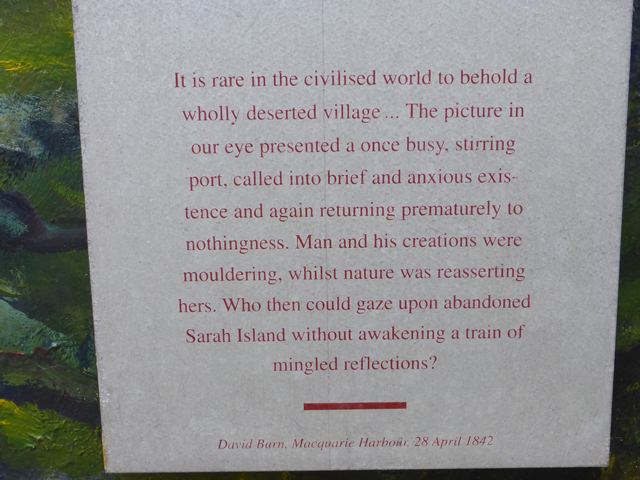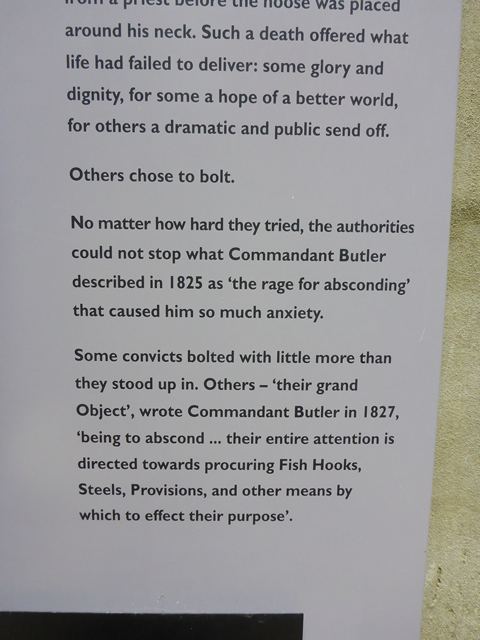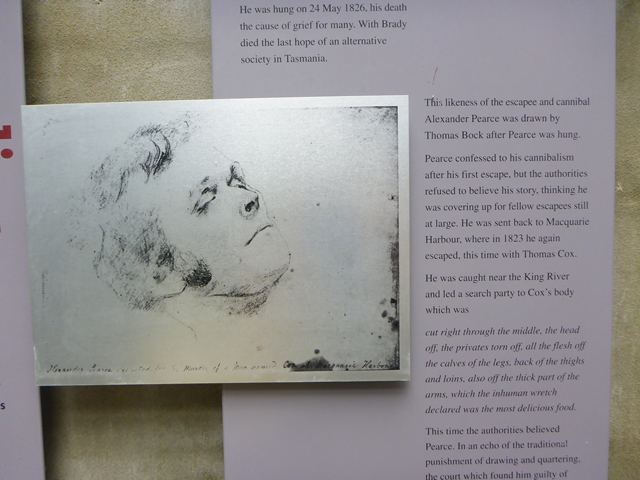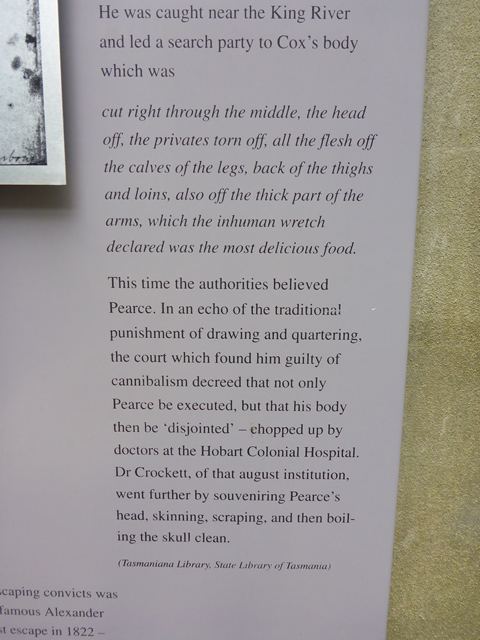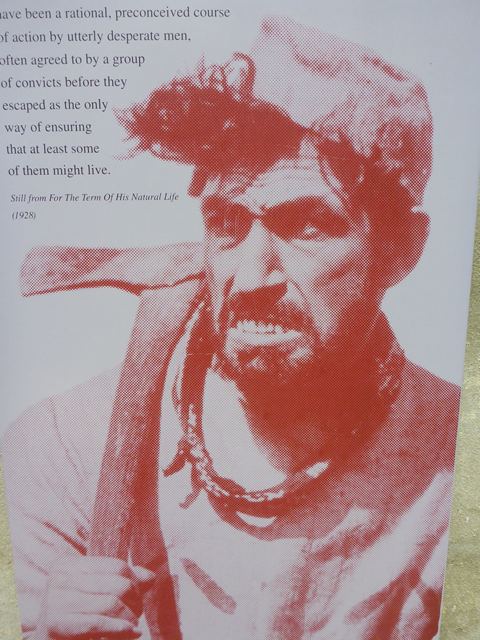2020 Tas The Penitentiary Years

|
Life on the Penal Colony of Sarah Island The story boards tell all too well the extreme pain of life on Sarah Island so I thought I’d tell you some stories of a more humorous, hopeful and human kind. I am taking source material from one of the multitude of literary pamphlets and books that exist telling this complex and colourful story; The Round Earth Publishing Company’s ‘The People Ships and Shipwrights’ A Guided Tour. William Sylvester was a convict gardener on the island and became known as ‘the streaker of Sarah Island’ when he ran naked around the settlement in an attempt to scandalize the wife of Doctor Garrett and her sister. The latter weren’t popular and Bill was responding to bribes from the Commandant’s servants to get rid of them. I’m not sure if he was successful but his punishment was to be relegated to a timber gang, not doubt amidst much mirth and cheers. George Millar was lashed with the ‘cat o’ nine tails’ 25 times for breaking into a solitary cell when it was occupied. Later research revealed the occupant was a certain Mary Anne Furze! Hope she was worth it. On the hopeful front one of the few successful escapes was engineered by Richard Morris, John Newton and Thomas Crawley and it is recorded as ‘dead in the woods’ because they were thought to have perished in the dense bush between the shores of the Gordon River and the hinterland. While working as limeburners up the river they managed to steal a boat and row it up the river as far as they could get. Before leaving the boat they posted a hand drawn sign on it saying ‘Now for Sale’. I liked that. Morris was supposedly seen in Oatlands, a town a third the way up the modern Midland Highway between Hobart and Launceston, around one hundred miles to the north east, two months later so he had won his freedom. Another story of persistent hope was that of Mary Anne Burgess whose husband Henry was a Sydney born carpenter sent to Sarah Island for stealing watches. Henry was struggling to look after his dead brother’s young family at the time (!) when he himself was far from well. Mary repeatedly petitioned Lt. Governor Arthur (remember how he was later torn between using the British Government’s conciliatory approach towards the treatment of Aborigines and the Settlers demand for their removal to Bass Strait Islands or extermination, conceding to the latter) to allow her to be with him on Sarah Island to care for him and eventually she had him assigned as her servant on the penal colony. Their grandson became Lord Mayor of Hobart. On the humanity front, one freeman who chose to come to the island to build ships of his own design was Master Shipwright David Hoy, who turned the convict shipyard into the most productive in Australia at the time. He specialised in building fast ships which local Masters found hard to handle. In total from 1828 for five years until the colony closed, the yard turned out 31 whale boats, 10 launches, 2 gigs, 6 long boats, 6 skiffs, 3 cutters, 9 punts, 9 yawls, 1 shallop and 6 sundry vessels. The skills thus learned by the convicts would stand them in good stead for their eventual release, but for a few that time was just too far away. You may have twigged the disadvantage to the authorities of producing ships that were so fast they could not be caught by conventional vessels. The Governor’s yacht, Penelope, a fast sailer built in the yard, was used in an escape attempt to Jamaica by three convicts. Ten others stayed on at the yard in 1833 to complete the building of the ocean going 121 ton Brig, the Frederick, and were last seen disappearing over the horizon to Chile 10,000 miles away in 1834. This incident has been preserved in the form of Australia’s longest running play, ‘The Ship that Never Was’ which is performed at the Museum in Strahan every day at 5.30 from September to May and the ad describes the escape as ‘a hilarious true story’ but sadly we were not there at the right time to see it. These were not the only vessels removed from the yard; the refurbished Brig Cyprus, David Hoy’s first project in the yard, was sailed by escapees to China in 1829. Prizes for what he said when he saw the space she had previously occupied. The blog of our visit to the island will come along shortly.
|
